��Ȧ reports from the port city now known as Mumbai as two of the British Raj’s largest ever colonial buildings are completed
Only the most niche tourist tours in Mumbai, formerly known as Bombay, will miss out the pair of huge gothic revival buildings which stand incongruously in the city centre. The Chhatrapati Shivaji Terminus, formerly called the Victoria Terminus - and before that the Great Indian Peninsular Railway Terminus - and the Municipal Corporation ��Ȧ are among the most famous buildings in India.

Both designed by English architect Frederick William Stevens, they were built in the last decades of the 19th century during the high water mark of the British Raj, the relatively stable period after the Indian uprising of 1857 and before the rise of organised independence movements in the early 20th century.
Today they are seen as symbols both of India’s colonial occupation and of Mumbai itself. At the time, readers of The Builder celebrated the construction of two of the largest buildings ever built in India under the Raj as a triumph of British imperialism. But letters and news items printed in the paper reveal the gulf that existed between the white settlers, who were concentrated in villas stretching along the coast, and the local Indian population living in the city itself.
“It is soon clear that his mode of life bears no analogy to that of a European, and that what interests the one falls flat on the other,” said one dispatch. Within 60 years of the completion of both buildings, India would be an independent nation.
Excerpt from a letter to The Builder, 3 May 1879
No sooner does the vessel drop anchor in the bay which forms the Bombay Harbour than the still air feels thick, and there is the disagreeable sensation of being surrounded by a warmth of which there is no getting rid. However, the place has from seaward the appearance of an ordinary civilised town; and on landing there are piers, streets, gas, and shops. Looking closer, however, life is at once seen to be pursued under extremely different conditions to those in a European country. It is evident that scarcely any of the white races live in the business town. They leave it in the afternoon for detached residences, stretching for miles along the hill sides which skirt the sea, or for cottages which line the beach behind the town.
Then amongst the crowds of people met with there are very few Europeans; scarcely any of these are on foot, and it is at once noticed that the representatives of the pure white races are almost all young or middle-aged men. A mixed miscellaneous white population is nowhere to be seen going freely about. There is nothing in the shape of a colony of Europeans in Bombay. The higher classes of society are connected with the service of Government or the practice of the law, or are members of important European firms; only a very few shopkeepers and tradesmen constitute what may be termed a middle class; and the less well-off Europeans are merely railway mechanics, seamen, and pensioned soldiers. The only permanent residents of a colonial type are the mixed races or the Indo-Europeans, amongst whom those of Portuguese origin are the most numerous.
The bulk of the Bombay population are natives of India, of course - Parsis, Mohammedans, Mahrattas, and various castes of Hindoos, with a few Arabs and other races. There are colleges and schools giving an English education, so that the clerks and attendants in offices and shops are seen at once to be intelligent and well-trained persons for business purposes. But there the ostensible effect of European learning ceases, and the newcomer looks in vain for any common ground on which to base a cordial understanding. The native seems to have no interest apart from the matter in hand. It is soon clear that his mode of life bears no analogy to that of a European, and that what interests the one falls flat on the other. Of course, this very much arises from the fact that, man for man, the natives are very much poorer than the Europeans.
News item, 16 July 1887
Great Indian Peninsular Railway Terminus, Bombay
The central keystone of the large masonry dome of the above buildings was fixed on Jubilee day, the 20th of June, thus bringing this large work to another stage
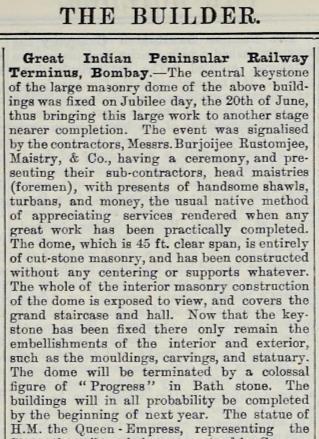
nearer completion. The event was signalised by the contractors, Messrs. Burjoijee Rustomjee, Maistry, & Co., having a ceremony, and presenting their subcontractors, head maistries (foremen), with presents of handsome shawls, turbans, and money, the usual native method of appreciating services rendered when any great work has been practically completed.
The dome, which is 45 ft. clear span, is entirely of cut-stone masonry, and has been constructed without any centering or supports whatever. The whole of the interior masonry construction of the dome is exposed to view, and covers the grand staircase and hall. Now that the keystone has been fixed there only remain the embellishments of the interior and exterior, such as the mouldings, carvings, and statuary. The dome will be terminated by a colossal figure of “Progress” in Bath stone.
The buildings will in all probability be completed by the beginning of next year. The statue of H.M. the Queen Empress, representing the State, the railway being guaranteed by Government, will be placed under the canopy in the central gable of the building. The cost of the terminal buildings when completed will be 27 lacs of rupees, or 250,000l. They were designed by Mr. F. W. Stevens, late of the Public Works Department, and are being carried out by that officer with the assistance of Mr. Siteram Khanderim, assistant engineer. The sculpture for the buildings has been executed by Messrs. Earp & Son, of Lambeth.
News item, 8 September 1888
Bombay Municipal ��Ȧs
We are informed that Mr F. W. Stevens, F.R.I.B.A., has been appointed to design and carry out the new Municipal ��Ȧs, Bombay. Mr. Stevens has just completed the Great Indian Peninsular Railway Victoria Terminal ��Ȧs, the most extensive modern architectural work yet erected in India. The Municipal ��Ȧs will be erected immediately opposite the Victoria Terminal ��Ȧs.
Excerpt from a news item, 13 October 1888
GREAT INDIAN PENINSULAR RAILWAY TERMINAL ��ȦS, BOMBAY
The total cost of the whole of the buildings was about twenty-seven lacs of rupees. All the work was entirely executed by native labour, entirely to the satisfaction, we understand, of the architect. We have devoted several pages of illustrations to this building, as it is one of the largest and most important modern buildings erected under European influence in the Indian Empire, and we have thought it well to give our readers the opportunity to form an opinion, as far as may be done from illustrations, as to the architectural merits of a building which has, apparently, received great admirations in the regions of Anglo-Indian criticism.
News item, October 25 1890
STREET SWEEPINGS.
According to Indian Engineering, the city of Bombay is getting into difficulty in regard to the disposal of its street sweepings. The sweepings are now conveyed in carts and emptied on what are known as the Flats, but all available space at this locality, which is being gradually dotted with dwelling-houses, will be exhausted in a few years more. The Bombay municipal authorities have under consideration a proposal to construct a steam tramway to convey the street sweepings from a spot on the Flats to the municipal tidal lands at Kurla, at the northern extremity of the island, with a branch line to the slaughter-house at Bandora for the conveyance of the daily meat supply of the city. The project, which was prepared and submitted in October last by Mr. T. H. White, Deputy Executive Engineer in charge of the Tansa Waterworks, provides for a 2 ft. 6 in. gauge steam tramway, to be laid partly in connexion with the Tansa Water Duct line. The quantity of sweepings now taken to the Flats at Tardeo is about 800 tons daily; the quantity estimated for in the tramway project is 1,000 tons per day. The present disposal of the sweepings must have prepared a charming sanitary ground for the future building of habitations; nor does the conveyance of meat by the same railway in the future seem quite reassuring.
News item, 24 January 1891
JERRY-��Ȧ IN BOMBAY.
On the 17th Dec., a five-storied dwelling-house in Bombay collapsed without warning, whereby twenty nine of its inmates were killed, and nearly forty badly injured. At an adjourned inquest, Mr. Rienzi Walton, Executive Engineer to the Municipality, said he had examined the débris and most of the timber-work was old stuff. The bricks were of inferior quality, but the mortar adhering to the bricks was for the most part good. The structure was a frame building with the spaces filled in with masonry. The house was constructed in accordance with the by-laws framed under the Municipal Act of 1878. Under this Act there was absolutely no authority to enforce any dimensions with regard to timber, walls, height, or any matter relating to structure. The ��Ȧ Department of the Municipality has for years appended to its building forms a schedule of dimensions which are deemed to be essential for the stability of buildings. There is no authority to enforce them and they are limited merely to suggestions. A local contemporary remarks that, in its opinion, “Whatever the Coroner’s inquiry may reveal as to the construction and material of the building which collapsed without warning yesterday morning, the moral responsibility for the catastrophe rests ultimately with the Corporation.” - Indian Engineer.
News item, 18 June 1892
THE NEW MUNICIPAL ��ȦS, BOMBAY.
The Bombay Gazette of the 7th ult. says that, with the exception of the central tower and dome, the masonry work of the new Municipal ��Ȧs, Bombay, has long since been finished, and now the decorative work is being proceeded with. The general ornamental work is all Indian, being composed of Indian animals, birds, and foliage, all worked into fanciful designs in relief. The balcony over the main porch is flanked by two-winged Venetian lions, rampant and holding between their paws weather vanes, while over the council chamber a rampant lion holds between its paws a shield bearing the arms of the Corporation. (These lions, we understand, were carved by Mr. Harry Hems, of Exeter.) From the terrace over the third floor, the central gable on the front tapers to a point from which rises an allegorical female figure, 13 ft. high, representing “Urbs Prima in Indis,” below which is a circular panel bearing the arms of the Corporation. The lions are now all in position, and the statue of “Bombay” will soon be in position over the main structure with out-stretched wings and holding aloft in her raised hand a full-rigged ship. It is intended to plant small gardens in front of the eastern and western wings of the building, facing respectively the Hornby and Cruickshank roads, while the ground between the wings will be laid out with shrubs and flower-beds and will have a fountain playing in the centre. Almost all the carved work in the buildings was designed and modelled at the Bombay School of Art and executed by skilled Telegu carvers. The architect of the buildings is Mr. F. W. Stevens, C.I.E., F.R.I.B.A., of Bombay.
More from the archives:
>> Nelson’s Column runs out of money, 1843-44
>> The clearance of London’s worst slum, 1843-46
>> The construction of the Palace of Westminster, 1847
>> Benjamin Disraeli’s proposal to hang architects, 1847
>> The Crystal Palace’s leaking roof, 1851
>> Cleaning up the Great Stink, 1858
>> Setbacks on the world’s first underground railway, 1860
>> The opening of Clifton Suspension Bridge, 1864
>> Replacing Old Smithfield Market, 1864-68
>> Alternative designs for Manchester Town Hall, 1868
>> The construction of the Forth Bridge, 1873-90
>> The demolition of Northumberland House, 1874
>> Dodging falling bricks at the Natural History Museum construction site, 1876
>> An alternative proposal for Tower Bridge, 1878
>> The Tay Bridge disaster, 1879
>> Cologne Cathedral’s topping out ceremony, 1880








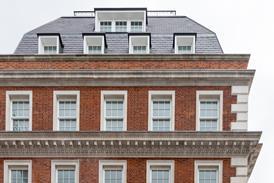
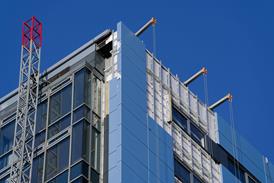
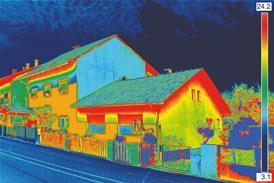

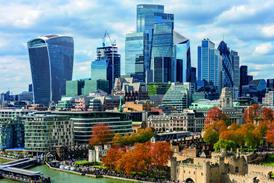




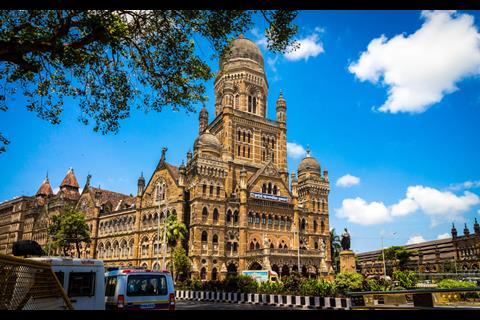
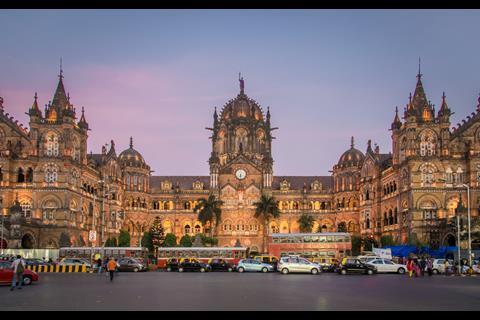
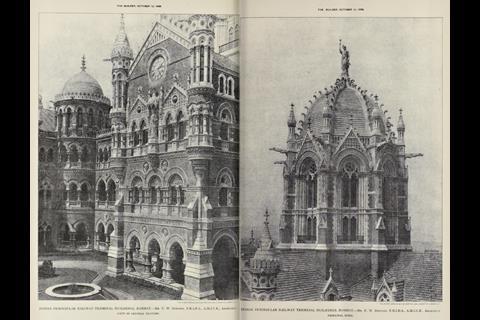
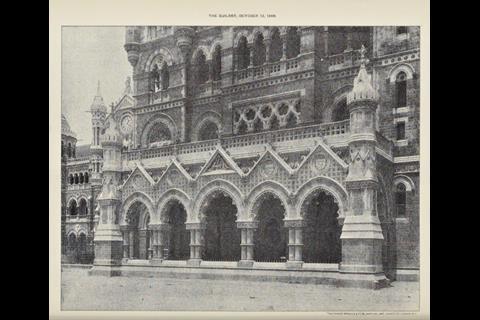
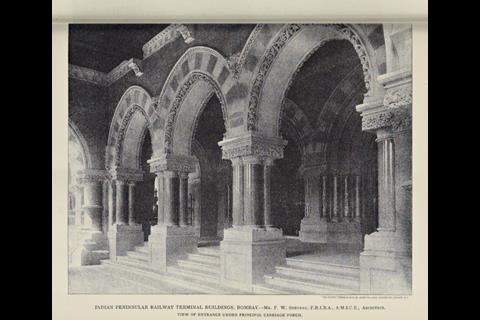
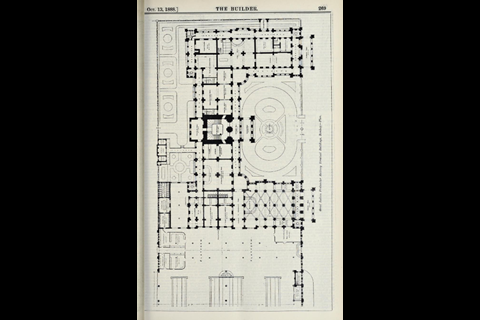
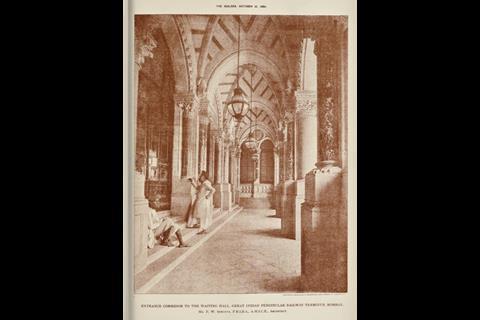







No comments yet